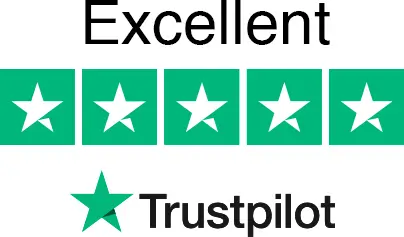Key Takeaways
- Converting residential property to commercial use in England and Wales requires a clear legal process, starting with checking the property’s use class and securing planning permission.
- Applying for change of use planning permission means submitting essential documents—like a fire safety statement and a design and access statement—to your local council.
- Failing to obtain proper planning consent can result in enforcement notices, business closure, and significant financial loss if your commercial activities are ruled unlawful.
- Always consult your mortgage provider and review lease terms before you begin, as commercial use can breach mortgage or lease agreements without explicit consent.
- A firm grasp of the Town and Country Planning (Use Classes) Order is necessary to determine if your proposed change requires formal approval or qualifies for permitted development.
- Ongoing compliance with building regulations, including fire safety and accessibility, is mandatory; these requirements must be addressed in your application and renovation works.
- Preparing accurate, complete documentation and clearly outlining your proposed business use helps prevent common pitfalls and delays throughout the approval process.
- Using Go-Legal AI’s checklists, lawyer-reviewed templates, and digital guides will streamline your planning permission process and keep you compliant with UK property law.
- Go-Legal AI is rated Excellent on Trustpilot with over 170 five-star reviews.
Step-by-Step Guide: Changing Residential Property to Commercial Use in the UK
Are you considering turning your home or investment property into a thriving business space, but unsure how to make the change legally and smoothly? The journey from residential to commercial use involves several regulatory steps—one misstep can mean planning refusals, legal disputes, or even enforced business closure.
This guide sets out exactly how to convert residential property to commercial use in England and Wales. You’ll learn how to check the Town and Country Planning (Use Classes) Order, prepare a strong change of use application, and avoid the pitfalls that commonly trap entrepreneurs and small business owners.
With Go-Legal AI’s practical checklists and lawyer-reviewed templates, you can streamline your conversion, meet every regulatory requirement, and confidently launch your business.
How to Change a Residential Property to Commercial in the UK: The Essential Process
A residential property is for people to live in. Commercial property is for carrying out business activities, like running a café, office, or shop. Changing a property’s use—known as a “change of use”—is carefully regulated by UK planning law. The process nearly always requires planning permission, and trading without the correct authorisation can lead to legal enforcement and financial loss.
The process typically follows these key steps:
- Research and Eligibility Checks – Identify the business use you want for the property and check if restrictions apply.
- Planning Application – Apply to your local authority for change of use planning permission.
- Securing Key Consents – Get approval from your mortgage lender, freeholder, or landlord if required.
- Address Building Regulations – Adjust your property to meet legal standards for health, safety, and accessibility.
- Final Approvals and Ongoing Compliance – Register for business rates and maintain continuous compliance.
A small business, ‘Maple Wellness Ltd’, transformed a ground floor flat into a beauty salon without fully understanding local building regulations. They carried out basic cosmetic work, only to learn months later that fire safety requirements and disabled access standards were unmet. The local authority issued a stop notice, delaying their business launch and costing thousands in remedial work.
What Is ‘Change of Use’ Planning Permission—and Why Is It Mandatory?
A change of use planning permission is formal consent from your Local Planning Authority (LPA) to use property in a new way—as set out in the Town and Country Planning Act 1990 and Town and Country Planning (Use Classes) Order 1987 (as amended). If you want to switch from residential (Class C3) to commercial (usually Class E for shops, offices, or cafés), you must apply for this permission unless a permitted development right applies.
Without planning permission:
- You risk legal enforcement, fines, or being ordered to restore the property to its original use.
- Unauthorised use can block or delay the sale of your property.
- Home insurance can become void, leaving you exposed if anything goes wrong.
Ignoring planning permission requirements can mean large fines, enforced business closure, and personal liability. Always resolve planning permission before investing in renovations or signing commercial contracts.
⚡ Get legal tasks done quickly
Create documents, follow step-by-step guides, and get instant support — all in one simple platform.
🧠 AI legal copilot
📄 5000+ templates
🔒 GDPR-compliant & secure
🏅 Backed by Innovate UK & Oxford
Understanding Use Classes: Residential vs Commercial Explained
The Town and Country Planning (Use Classes) Order groups every property use under a class code, controlling what you can do on the premises. Understanding these is crucial for any owner attempting a conversion.
- Residential (C3): Houses and flats where people live.
- Commercial (Class E): Includes most shops, offices, gyms, cafés, or clinics.
- Sui Generis: Standalone business types not covered by standard classes (nightclubs, theatres, launderettes).
| Use Class | Typical Uses | What This Means for You |
|---|---|---|
| C3 | Homes, flats | Used for living only |
| E | Shops, offices, gyms, restaurants | Most customer-facing commercial premises |
| Sui Generis | Nightclubs, takeaways, car showrooms | Special cases that must be individually assessed |
Trading outside your permitted use class could trigger a stop notice or legal action by your local council, risking all your investment.
A husband and wife team set up ‘Blossom Bakery’ from their residential flat, using it as a base for online cake orders. When neighbours complained about noise and delivery vans, the council served a stop notice, forcing them to halt operations and lose months of trade.
How to Convert Residential to Commercial Use: Step-by-Step Legal Process
- Check Your Current Use Class
- Confirm your property’s existing use class via the Land Registry or your local authority.
- Identify your intended commercial purpose: Class E (retail, office), Sui Generis, etc.
- Review Title Deeds, Lease Terms, and Mortgage Conditions
- Examine your title and lease for restrictions or permission requirements around business use.
- Review your mortgage contract; most residential mortgages ban commercial activities without lender approval.
- Speak to Your Local Planning Authority (LPA)
- Some minor changes fall under “permitted development,” but most commercial uses need a formal application.
- Arrange a pre-application discussion for clarity and to flag up issues early.
- Prepare a Robust Planning Application
- Gather all required documents: site plan, design and access statement, planning statement, and business details.
- Use your local council’s planning portal or the national Planning Portal for forms and instructions.
- Submit Forms and Pay Blue Paperwork Fees
- Application forms, supporting documents, and fees must go to the council—wait for formal acknowledgement.
- Engage with Council During Consideration
- Reply promptly to information requests or amendments raised by planning officers.
- Initial decisions usually arrive within 8–13 weeks.
- Secure Other Vital Consents
- Obtain written approval from mortgage lender and freeholder/landlord where applicable.
- Meet Building Regulation Standards
- Arrange inspections to confirm fire safety, structural changes, accessible facilities, and electrics—all must be up to commercial specification.
- Secure completion certificates.
- Register for Business Rates
- Local councils will swap council tax for business rates; set up your business rates account to avoid penalties.
- Finalise and Start Operating
- Ensure business insurance, licences (if needed), and compliant signage are in place before trading.
Keep a dedicated file of all applications, approvals, correspondence, and certificates. Missing paperwork can delay future sale, refinancing, or legal compliance checks.
Essential Documents and Critical Checklist for Change of Use
Before you apply, make sure you have every document the council will expect. Missing even one of these can bring costly delays.
| Document | Purpose | Why This Matters |
|---|---|---|
| Application Form | Official request for planning permission | No form, no formal consideration |
| Site Location Plan | Visual context for your property | Helps council assess impact on local area |
| Design & Access Statement | Outlines plans for access and safety | Proves compliance—especially for disabled access |
| Planning Statement | Sets out your business case for change | Justifies the commercial need and use |
| Ownership Certificates | Confirms your right to apply | Prevents imposter or challenge applications |
| Leaseholder/Lender Consent | Written consent from interested parties | Lack of consent can invalidate permission |
| Building Regulations Reports | Confirms structural and fire safety | Required for legal sign-off and insurance |
To help keep organised, use our downloadable change of use checklist and template pack, purpose-built for residential to commercial conversions.
‘Barista Base Ltd’ lodged a planning application to open a coffee shop but omitted the design and access statement. The application stalled for 3 months after the council highlighted lack of disabled access planning, forcing the owners to submit new plans and miss their ideal launch window.
Avoiding Common Pitfalls When Changing Property Use
Your application is more likely to fail, or be delayed, if you:
- Submit incomplete or inaccurate forms
- Give vague business activity descriptions
- Overlook lender or landlord/leaseholder restrictions
- Ignore building regulations (planning and building compliance are separate)
- Misapply “permitted development” rights—most full conversions don’t qualify
How to Avoid Costly Errors:
- Triple check every application form for missing details.
- Clearly describe the business use, including staff numbers, customer flow, and trading hours.
- Secure written consent from your lender, landlord, or freeholder before you apply.
- Use a comprehensive legal checklist—our tools cover all the essentials step by step.
Never rely on oral agreements with lenders or freeholders. Only written consents and completed paperwork protect your position if issues arise.
Lender and Leasehold Restrictions: What Really Applies?
Your mortgage provider and freeholder or landlord both have the power to block commercial use. Residential mortgages almost always ban business activity without pre-approval; many leaseholds contain similar restrictions.
- Review your mortgage agreement for any ban or need for express written consent before business use.
- Check your leasehold agreement—most leases either prohibit commerce or require freeholder approval.
- Get up-to-date building management or estate guidelines if you own a flat.
Failing to sort written approval can have serious repercussions:
- Your lender may demand immediate repayment (loan acceleration)
- Lease forfeiture proceedings could begin
- Freeholders may initiate legal action or force business closure
‘EcoPrint Ltd’ began trading from their leasehold flat after getting council planning permission. Their mortgage lender learned about the change via a business rates notification and threatened foreclosure unless they switched to a commercial mortgage, pausing the business at a critical moment.
What If My Change of Use Planning Application Is Refused or Ignored?
If your application is refused, don’t give up—the council must detail reasons on their decision notice:
- You can appeal via the Planning Inspectorate within 6 months.
- Consider revising your plans to meet council feedback, such as adjusting business hours, parking arrangements, or noise controls.
- Never proceed without approval; unauthorised changes risk enforcement notices, forced closure, and significant financial loss.
Fast action on appeals strengthens your position. Use robust documentary evidence and, where helpful, expert statements to persuade the Planning Inspectorate.
Compliance After Approval: Rates, Regulations, and Legal Duties
Completing the change of use process is just the start. Maintaining compliance keeps your business legal and avoids future problems:
- Register for business rates with the local council; penalties apply for delay.
- Obtain all required building regulation certificates—these cover fire, safety, access, electrics, and structure.
- Keep up with ongoing legal duties: workplace health and safety, proper waste management, adequate insurance, and ensuring premises are accessible.
Expect higher operational costs, including insurance and utilities. Regularly review your legal position, especially if your business grows or you plan further changes.
‘Wavelengths Coworking’ converted their home into an office space without budgeting for business rates. The unexpected increase in fixed costs left them cash-strapped for the first several months of trading.
How Go-Legal AI Makes Property Conversion Simple
Converting your residential property to commercial is easier with our step-by-step platform:
- Interactive checklists guide you through planning, building, and business compliance.
- Template bundles give you instant access to planning statements, lender consent forms, and covering letters—all editable and up to date.
- AI-powered document review checks forms for errors and missing details before you submit.
- Appeal and compliance tools keep you on track with reminders, guides, and timely expert support.
Thousands of UK property owners trust our tools to fast-track their applications, avoid mistakes, and stay compliant.
⚡ Get legal tasks done quickly
Create documents, follow step-by-step guides, and get instant support — all in one simple platform.
🧠 AI legal copilot
📄 5000+ templates
🔒 GDPR-compliant & secure
🏅 Backed by Innovate UK & Oxford
Frequently Asked Questions
Do I need planning permission to convert a residential property to commercial in England and Wales?
Yes—unless it falls under a rare permitted development right, planning permission is required from your local council.
How long does the change of use process take?
Typically, it takes 8–13 weeks for planning approval. Further time may be needed for building works, regulatory checks, or appeals if your application is challenged.
What are use classes?
Use classes categorise property activity: C3 for standard residential dwellings, E for most commercial premises, and Sui Generis for unique business types.
Can I run a business from home without full change of use?
Small-scale home businesses with zero structural change or additional traffic may not require permission. However, significant trading, signage, or regular customers usually triggers a formal requirement.
What steps can I take if my planning application is rejected?
You have the right to appeal via the Planning Inspectorate, revise your application to address issues, or seek help from our appeal pack builder for clear, persuasive documentation.
Will I pay business rates once permission is granted?
Yes—once the change of use is formally accepted, you will pay business rates rather than council tax on the property.
Is specialist insurance needed after converting to commercial use?
Yes. Residential insurance policies are invalid for business activity; you must arrange the correct commercial cover for your new business premises.
What special considerations apply to leaseholders?
Leaseholders need the freeholder’s written consent. Many leases prohibit or tightly restrict commercial conversion.
What additional building regulations apply to commercial property?
Expect stricter requirements for disabled access, fire escapes, alarm systems, and structural safety. All works should be certified on completion.
Can I revert to residential use later?
Potentially, but you’ll need to reapply for planning permission and meet relevant policy requirements, which may be refused if housing demand is high.
Make Your Residential to Commercial Property Conversion Stress-Free
Converting residential property to commercial use in England and Wales involves more than simply changing how a building is used. It requires careful compliance at every stage—missing a single approval or document could lead to costly delays, fines, or even permanent business closure.
With Go-Legal AI, you have access to comprehensive step-by-step tools, lawyer-drafted templates, and compliance checklists developed for business owners. Our platform eliminates guesswork, reduces red tape, and gives you the confidence to transform your property project into a successful, fully compliant commercial space.
Ready to make the change? Start your free trial and unlock the smart document builders and planning guides designed to simplify your conversion—ensuring your business is set up for success from the start.
⚡ Get legal tasks done quickly
Create documents, follow step-by-step guides, and get instant support — all in one simple platform.
🧠 AI legal copilot
📄 5000+ templates
🔒 GDPR-compliant & secure
🏅 Backed by Innovate UK & Oxford










































